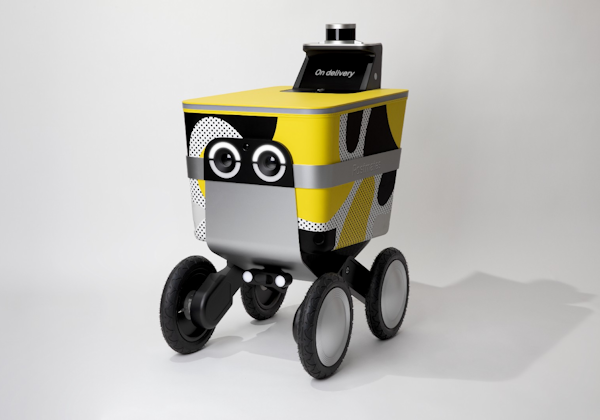Robots Like This Could Be the Future of Delivery

Last week, Postmates unveiled what it believes will be the future of local delivery: a robot it calls Serve. It will employ Serve to take groceries and meals to residents in Los Angeles. The company says it plans to roll out the service to more cities over the next 12 months. As autonomous driving goes through its growing pains, Postmates is betting that robots can drive down costs for consumers.
Serve is an all-electric shopping cart-sized robot with a locked compartment on wheels and blinking eyes and lights that allow it to communicate with pedestrians through light patterns. For example, it has a ring of lights on its top to indicate an upcoming turn. The robot will be able to roll alongside people on sidewalks, relying on lidar and other sensors to avoid obstacles and pedestrians. Lidar, short for light detection and ranging, is a system that uses pulsed lasers to measure distances. These are the same types of sensor used in some autonomous cars.
Serve, the robot, will deliver products to customers’ front doors. The cargo hatch can then be unlocked using a smartphone or passcode. The bot can also pick up food from restaurants in congested areas and bring them to a Postmates dispatch hub from where delivery people can take packages the last mile.
Postmates already makes more than 4 million deliveries per month, but using traditional transport methods such as bikes rather than bots. It competes with restaurant-delivery companies like DoorDash, Grubhub and Uber Eats. This has become a very competitive business, with companies frequently using promotions to lure customers. Postmates expects its new robot fleet will allow it to lower costs.
We believe the day will come when Postmates’ vision of using robots for door-to-door delivery plays out, making human delivery a type of luxury. But getting there won’t be easy: this type of shift doesn’t happen overnight and will face many obstacles other than physical objects. Municipalities will look to regulate these services and consumers will be sceptical or even alarmed by these autonomous carts trundling up and down streets. We’re keen to see if Postmates can deliver on its promise.

 Twitter
Twitter
 Facebook
Facebook
 LinkedIn
LinkedIn
 Email
Email